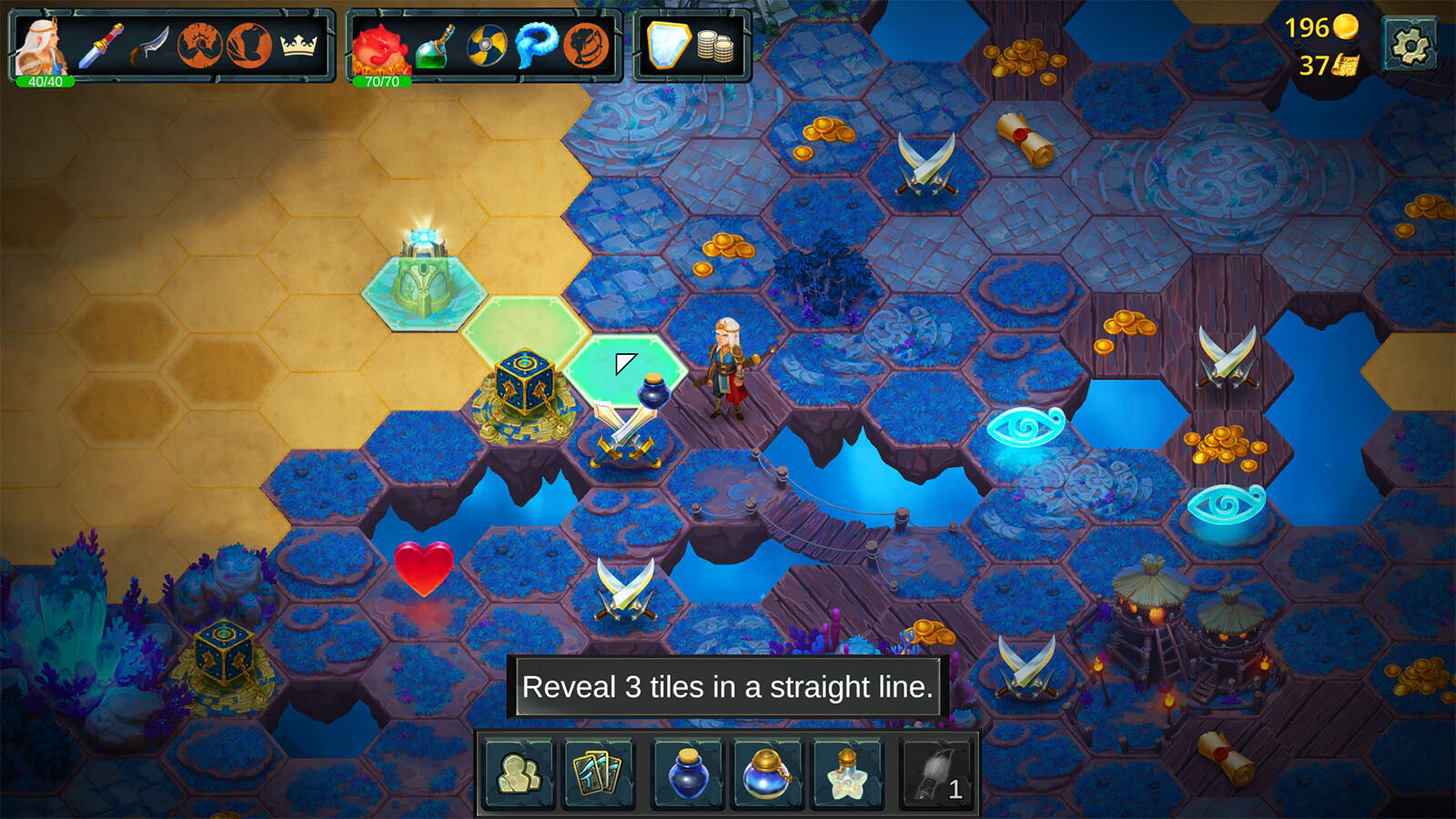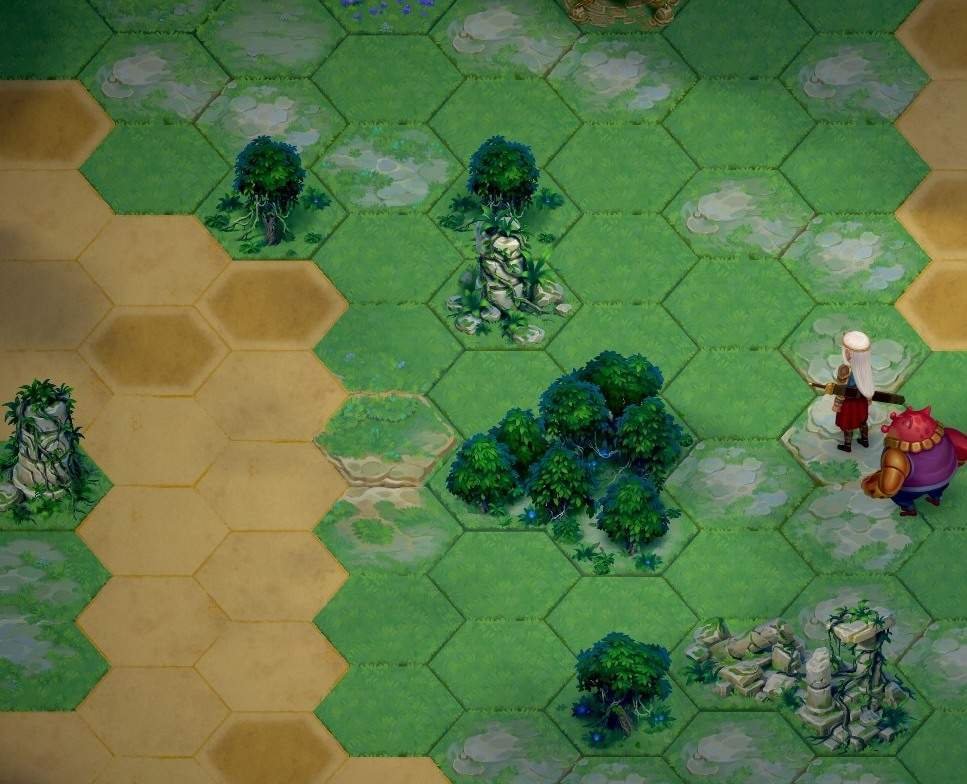
Morris: The very first iteration of Roguebook was a prototype based on the Faeria engine. GamesBeat: Was the overworld something that was part of your first design doc? Or was it more of a goal, and you had a fallback plan in case it didn’t work? I think to me, if you ask me what the hardest battle of making this game was, it was getting the overworld right, because there were so many opportunities to do it incorrectly. Why don’t we make it about inks and brushes? Long story short, we ended up there because we wanted to make something new and interesting, something fun and unique. We originally had this as torches, a torch system. Putting values in tiles and revealing them. Are we gonna dead-end ourselves? Do we have to fall back on a branching path? But somehow, by some miracle, we ended up with this idea of revealing tiles as an economy, that sort of thing. We went through a lot of iterations that just weren’t working. There was a time when you could only move so many spaces, and then there was a night and day cycle. We tried so many different things that failed, to be frank. Because you’re right: We could just do the branching path thing that Slay does, but we wanted something more. But where can we push? Where can we innovate? The overworld, we’re actually really proud of where we ended up, but it was one of the scariest things to develop. Of course we played a lot of Slay the Spire. We wanted to make a game in this genre, this roguelike deckbuilder genre. Morris: That was one of the ways we wanted to innovate. GamesBeat: Why use an open map? You can take different branches, as opposed to Slay the Spire, where you take one branch and then take another branch. It’s kind of like the spirit of the book. But it takes a different form each time you play, each time you do a run. We call the Avatar of Greed and Avatar of Mist. Morris: You’re fighting the book itself, the spirit of the book. GamesBeat: Are you fighting the person who made it, or are you fighting the book itself?
#Roguebook roadmap how to
It started learning how to create, I guess I could say, because I will say that the character Nadin, who’s basically your guide, the tutorial in the game, the little furry guy who walks around - he is not from the world of Faeria. It has this insatiable urge to continue to tell more stories. It wants to take more and more so it can tell more and more stories. It can only take from the world around it. The book doesn’t know how to create things. The book itself doesn’t create these things? GamesBeat: All the monsters, characters, items, and areas inside the book have been sucked in by the book or written by the book’s author with the magic.

When you’re in battle you’re fighting things that would normally be “good guys.” So really, the book ended up as the solution for that goal, for getting ourselves into the same universe but a different story. The idea was to have a place where we could have a reason to have all these Faeria characters in one place, working together and teaming up when they normally wouldn’t, because you have good guys and bad guys working together. It wasn’t always this way, but it has this will of its own, and it starts sucking things into it and creating its own universe inside of it, its own unique story, a never-ending story kind of thing. There’s this book that starts getting a will of its own.

It’ll take a cup or a painting off the wall or even eventually a person. If you put it in a room, it’ll start absorbing things from the room.

How do we connect these two things? We ended up with this concept of a book that, long story short, absorbs the world around it. We said, OK, we’ll make a new game, a brand-new type of game. Gary Morris: We ended up deciding on a book because we we wanted to find a way to connect this game to our other game, which was Faeria. GamesBeat: Why frame Roguebook through a book? This is an edited transcript of our interview. We delved into how Roguebook came about, its framing, and the mechanics that make it distinctive from the likes of Slay the Spire. I recently spoke with Gary Morris, a game designer and community manager at Abrakam Entertainment. Yet this helps Roguebook stand out in an increasingly crowded genre. The pace of combat is different than what you find in other deck-building roguelikes. You aren’t fighting alone - you get a companion and allied spirits - but you’re often outnumbered in battle. It takes some time playing around with Roguebook’s mechanics to get used to it.


 0 kommentar(er)
0 kommentar(er)
